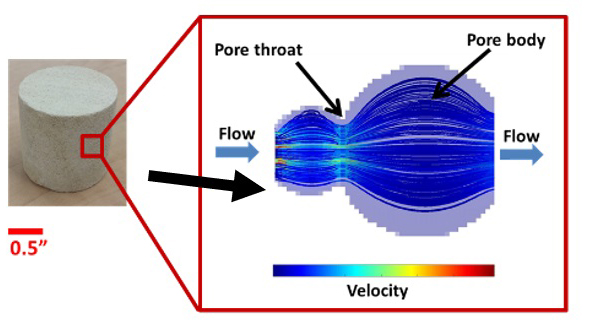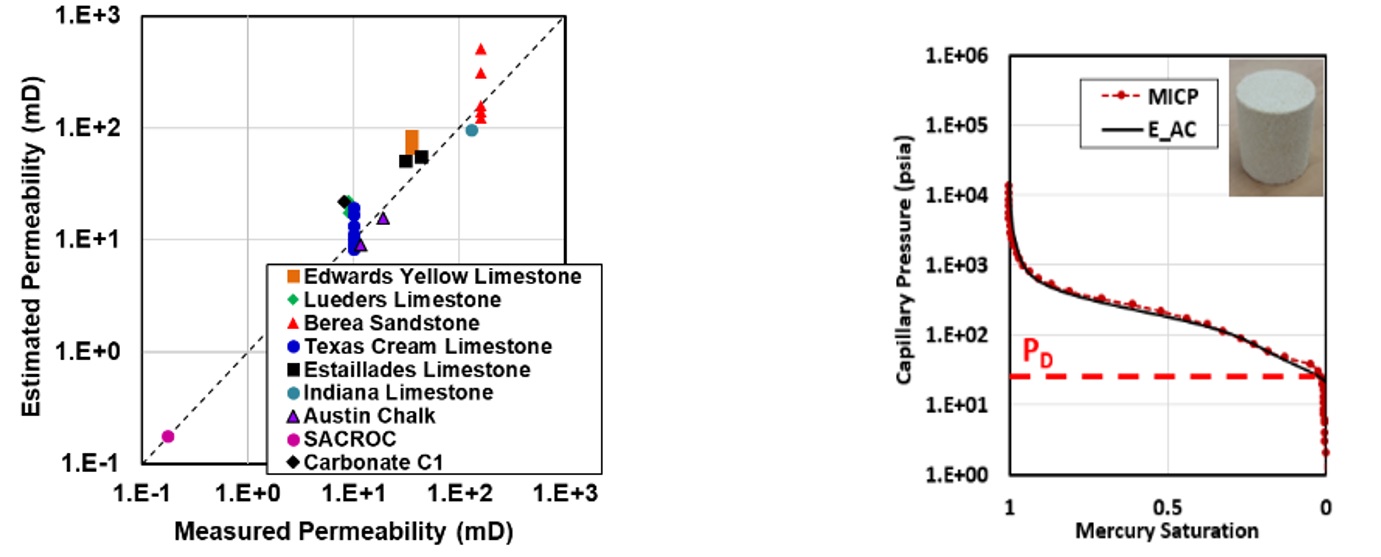Problem statement
Pore-throat-size distribution is one of the most basic properties of porous media, which controls fluid flow and many physical properties of reservoir rocks (Fig. 1). Accurate, real-time, safe, and in-situ assessment of this property, however, has always been a challenge for the petroleum industry. Reliable assessment of this property enables dependable evaluation of dynamic petrophysical properties of rocks such as permeability, capillary pressure, and relative permeability, which are critical for reservoir modeling and for making production decisions. The current technologies for estimation of pore-throat-size distribution and capillary pressure need coring which is highly expensive, time consuming, and limited to specific depth intervals and, as in the case of mercury injection, requires special care to prevent environmental hazards.
 | Fig. 1: Illustration of pore-throat and pore-body size distribution |
Technology description
Dr. Zoya Heidari, a professor at The University of Texas at Austin, and her students have developed a novel technique which overcomes the limitations of current technologies while also providing a complete and coherent rock characterization at reservoir scale. The main feature distinguishing this from current technologies is the calibration-free workflow for non-intrusively estimating pore-throat-size distribution. The technology consists of integrating information obtained from the joint interpretation of nuclear magnetic resonance (NMR), electrical resistivity, and dielectric permittivity measurements.
Technology validation
To validate this technology at the core-scale domain, permeability and capillary pressure were estimated through the introduced workflow and compared against state-of-the-art technologies. The assessment of calculated permeability using the proposed calibration-free workflow versus experimental measurements in Fig. 2a suggests relatively high accuracy in permeability assessment using this developed technology. Furthermore, the measured capillary pressure using MICP method for Estaillades Limestone rock is in perfect agreement with estimated capillary pressure as shown in Fig. 2b.

Fig 2: Technology validation for (a) permeability; (b) capillary pressure

